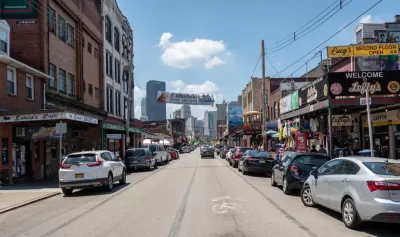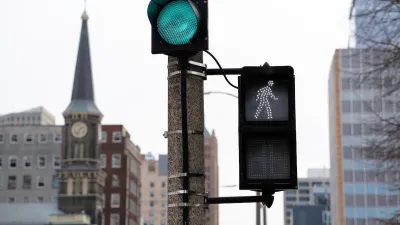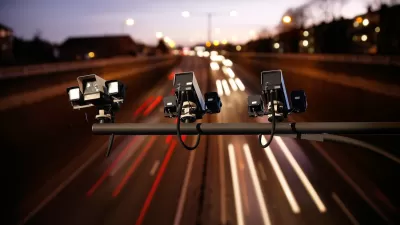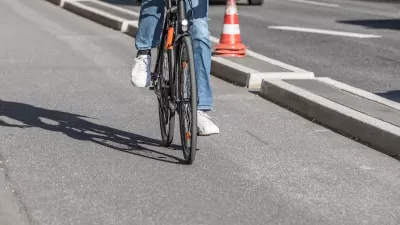The plan lays out strategies for improving pedestrian infrastructure and eliminating traffic deaths.

In an effort to support the city's mobility goals–which include reducing pedestrian deaths to zero, improving access to fresh food for all neighborhoods, and making one-mile trips easy and accessible without a car–"Pittsburgh's Department of Mobility and Infrastructure (DOMI) is launching the city's first pedestrian safety action plan." As reported by Katie Pyzyk in Smart Cities Dive, the plan "contains 10 priority strategies and actions to improve pedestrian safety that the department will implement over the next few years."
"Throughout, the plan emphasizes the need for inclusive and equitable solutions," particularly those targeting "vulnerable street users" such as the elderly, children, and people of color who "are disproportionately represented in crashes and fatalities." Pittsburgh's efforts follow other federal and local plans to eliminate traffic deaths and improve pedestrian safety. "[I]f we're going to be an inclusive city, if we're going to be a safe city, if we're going to be a livable city ... we really need to enhance and improve all the pedestrian environments," says DOMI director Karina Ricks.
"Like Pittsburgh, some cities devise dedicated pedestrian safety plans, while others incorporate that element into broader city plans. Milwaukee and Baltimore, for instance, are implementing complete streets policies that include pedestrian safety improvement elements."
FULL STORY: Pittsburgh unveils its first pedestrian safety action plan

Trump Administration Could Effectively End Housing Voucher Program
Federal officials are eyeing major cuts to the Section 8 program that helps millions of low-income households pay rent.

Planetizen Federal Action Tracker
A weekly monitor of how Trump’s orders and actions are impacting planners and planning in America.

Ken Jennings Launches Transit Web Series
The Jeopardy champ wants you to ride public transit.

NYC Open Streets Organizers Call for City Support
The number of open streets projects has dropped year after year as volunteer groups struggle to fund and staff them.

Crime Continues to Drop on Philly, San Francisco Transit Systems
SEPTA and BART both saw significant declines in violent crime in the first quarter of 2025.

How South LA Green Spaces Power Community Health and Hope
Green spaces like South L.A. Wetlands Park are helping South Los Angeles residents promote healthy lifestyles, build community, and advocate for improvements that reflect local needs in historically underserved neighborhoods.
Urban Design for Planners 1: Software Tools
This six-course series explores essential urban design concepts using open source software and equips planners with the tools they need to participate fully in the urban design process.
Planning for Universal Design
Learn the tools for implementing Universal Design in planning regulations.
Heyer Gruel & Associates PA
Ada County Highway District
Institute for Housing and Urban Development Studies (IHS)
City of Grandview
Harvard GSD Executive Education
Toledo-Lucas County Plan Commissions
Salt Lake City
NYU Wagner Graduate School of Public Service





























